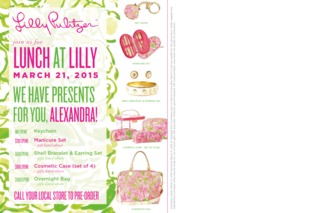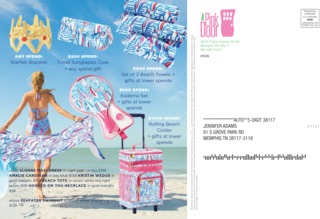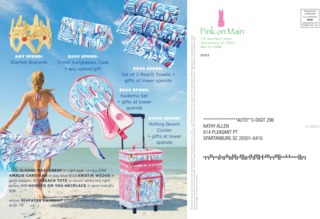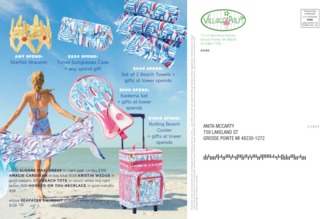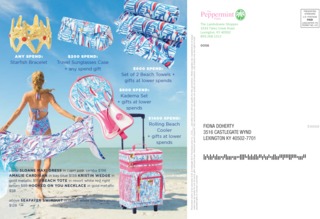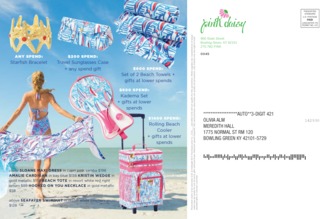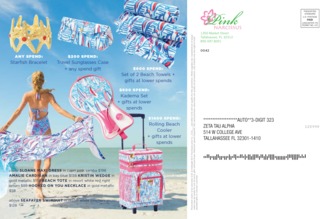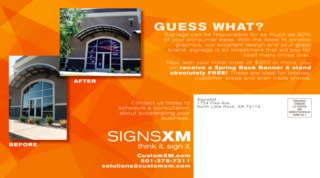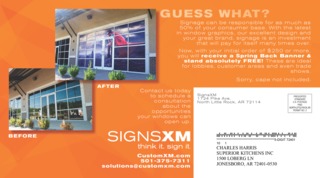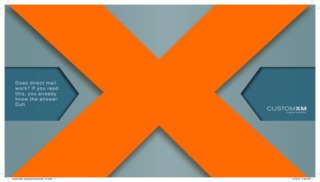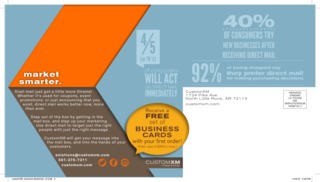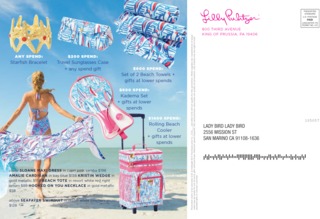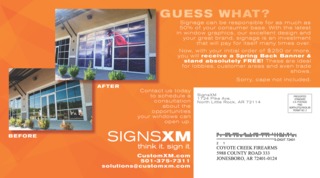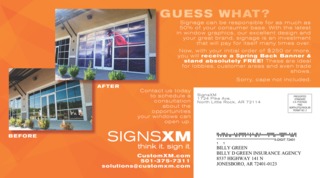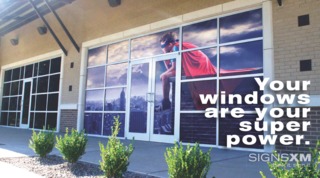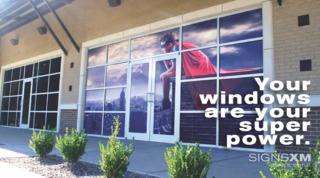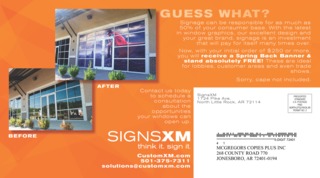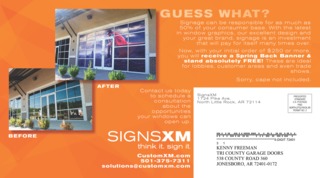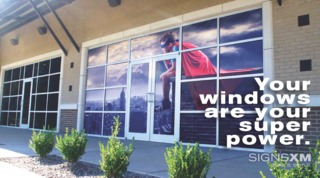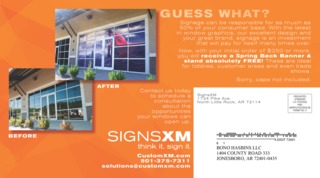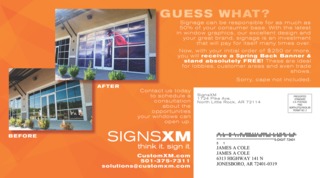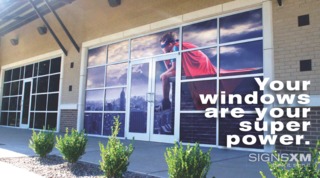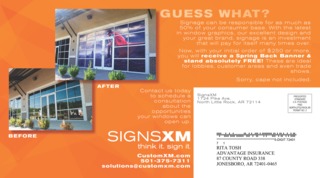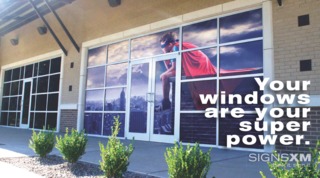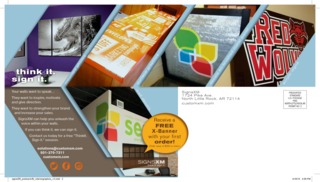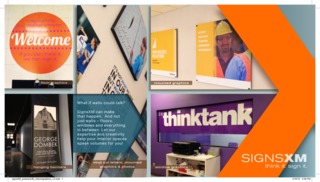Direct Mail Best Practices
Despite the exponential growth in digital channels, direct mail does not have one proverbial foot in the ground.

To quote Mark Twain, “Reports of my death have been greatly exaggerated.” Despite the exponential growth in digital channels, direct mail does not have one foot in the ground.
In fact, while direct mail must share the budget with more marketing channels these days, investment in direct mail is actually on the rise. According to the Winterberry Group, marketers spent 2.7 percent more on direct mail in 2014 than 2013. This is more than double the group’s forecast of 1.1 percent. In terms of actual dollars, the Winterberry Group’s projected direct mail spending was $45.7 billion in 2014, up from $44.5 billion in 2013.
Not only are direct mail volumes up, but marketers are creating higher value, more complex campaigns. We are seeing greater use of targeting and personalization, high-end finishing, personalized mapping, and tighter, more effective integration with other channels.
“I believe there has been a resurrection of direct mail,” noted Paul Strack, president of CustomXM (North Little Rock, AR), which specializes in direct mailings. “We’ve had better success with some of our direct mail recently than we have in quite some time. Part of it, I believe, is that there isn’t as much volume in the mailbox, so well-designed pieces will be more effective.”
What are the top things you need to make sure your clients direct mail is seen and acted on? Here are seven best practices followed by the most successful mailers.
Best practice #1: Know your customer
Top mailers know their customers. Even if they are not personalizing to individual recipients, they are investing in their lists, segmenting their mailings, and creating customer “personas” to which they tailor their messaging. Even if they are not personalizing down to the individual, they are sending highly targeted, highly relevant communications.
A great example of the power of targeting comes from Stanley Steemer. It went from ad hoc direct mailings to a strategic deployment of highly segmented communications nine times per year. Working with its marketing agency Baesman, it mined its database, created profiles, and has started deploying 10 to 20 different segmented versions for each mailing. The results? A 33 percent increase in bookings from direct mail.
This takes work. To make it happen, Stanley Steemer had to be committed to breaking down the silos where data was hidden and integrating its email and direct mail channels so that they work well together. It also had to commit to excellent content, consistent branding across channels, and improved tracking and measurement.
The Standard Group, a print management and marketing logistics company located in Reading, PA, is also doing high-level direct mail for its clients. This includes resort wear and beach clothing retailer Lilly Pulitzer. Lilly Pulitzer does name personalization on many of its direct mail postcards, and it leverages consumer analytics to guide decision-making behind the scenes.
Among these decisions is strategic segmentation. Lilly Pulitzer segments consumers to provide them with the most relevant and targeted experience, with the goal of driving retention and sales. For example, top consumers receive direct mail that offers exclusive first looks and invitations to local in-store events, along with reminders about upcoming promotions. For consumers in the “lower spend” category, the message is reinforced via email.
“Lilly Pulitzer understands its consumers very well,” explained Thanh Nguyen, CMO for The Standard Group. “The company segments her experience accordingly, talks to her about things she cares about, and communicates via her channel of choice.”
For Lilly Pulitzer, direct mail achieves a great return. “There is too much noise with digital,” said Nguyen. “Email alone is competing with thousands of others as well as the spam filter. Mail successfully breaks through the noise because you only get so many direct mail pieces each day. Mail is personal, engaging, and commands attention.”
Best practice #2: Be consistent
While direct mail has power of its own, top mailers know that it has more power when used consistently over time.
CustomXM just completed a project for the Arkansas Funeral Directors Association, which wanted to promote its annual conference and membership drive. CustomXM used a consistent, progressive multichannel approach to get attention and better-than-expected results.
There are approximately 300 funeral homes in Arkansas, and the association hoped to raise its membership to 150. To make this happen, CustomXM used three mail drops and three email blasts over a five-week period.
The first mail drop was an AFDA Membership and Conference brochure and registration form. The back of the mailing included the incentive and offer. The second mailing (to nonresponders) was a follow-up reminder saying that the offer had been extended. The third and final drop was a play on words regarding cremation services, which are often overlooked by funeral homes as a profit center, asking if [Name] Funeral Home’s profits were “turning to ashes.”
For all mailings, the mail dropped on Fridays. Follow-up emails were sent the following Wednesdays.
Membership acquisition exceeded expectations, and the AFDA conference was the largest on record. What made the campaign work so well?
- The list was highly targeted.
- The association understood the needs and motivators of its audience.
- The mailing had a clear, succinct message.
- There was a strong call to action.
- The campaign used repeated exposure of the message over time.
“You’ve seen all the stats,” said Strack. “People are bombarded with thousands of messages every day. It takes three to four exposures before someone notices you. Part of our job was to figure how many times we could touch them in the target window without being obnoxious.”
Another best practice, noted Strack, was keeping a consistent look and feel between the direct mail and email. “You don’t want something different from channel to channel because you’re reinforcing that image,” he said. “Recipients may throw the direct mail in the trash. They may hit the delete on the email. But after they see the same branding and message three or four times, it resonates.”
Best practices #3: Combine channels
Marketing campaigns that combine print with other channels, whether email, social media, mobile, or other channel, are more effective than print alone. Multichannel not only reinforces the message, but it also enables marketers to take advantage of the best that each channel has to offer.
IWCO Direct (Chanhassen, MN), a leading provider of direct marketing solutions, regularly combines channels to boost response and conversion rates. While the company is not at liberty to discuss specific campaigns, Wes Sparling, vice president of marketing strategy, notes that in one campaign he managed, an email was sent approximately one week prior to the deployment of the direct mail, teasing the upcoming mail piece with a “watch your mail box” message. “This provided a lift of just under 20% in response over the control (direct mail without the pre-email),” he says.
Sparling also worked with a client to coordinate an email, television, and direct mail campaign, with supporting display and SEM (pay-per-click and SEO) during a defined campaign window. Testing revealed display advertising had a positive impact of more than 20% on direct mail response.
CustomXM is also a strong proponent of the multichannel approach. When its client, Garver Engineering, wanted to improve its trade show presence and increase engagement with targets and prospects on social media, CustomXM used a combination of email blasts, personalized postcards, and social media. All drove people to personalized websites where they could enter an iPad giveaway. Printed cards with a generic URL and QR Code were distributed at the show, allowing attendees to register while visiting the company’s booth. Overall, the campaign drove a 29% response rate and increased traffic to their booth by 10% to 50% from the previous year.
These results are not unusual. The trick for printers is to help their clients understand which channels are the most effective for specific types of campaigns. This requires patience, consistency, and testing.
Best practice #4: Track and refine timing
With mail tracking services, best practices mailers are tracking when mail pieces drop to either time follow-up touches or simply get to know the rhythm of the Post Office so they can hit their target windows.
Especially for retailers, mailing windows are critical. If the mailer arrives too early, people will sit on it. If it arrives too late, the retailer will miss the window for the promotion or sale. So The Standard Group uses mail tracking to gather insight into patterns within the USPS delivery system so it can fine-tune mail drops to meet these critical windows.
“By following the patterns, we can anticipate that certain areas of the country might be problematic due to postal consolidation or even an increase mailings,” said Nguyen. “Knowing this, we can be proactive in figuring out ways to work around it. In certain ZIP Codes, for example, we might send mailings ahead of time or send those mailings First Class.”
Best practice #5: Use standout elements
Increasingly, marketers are moving away from standard sized postcards and mailers to oversized cards, dimensional mail, and mailers with unusual elements such as accordion-style fold-outs. This helps mailings to stand out.
Companies like Red Paper Plane specialize in dimensional mailers, including pop-up cubes, pop-up houses, “exploding pages,” telescoping mailers, and a variety of other formats that command attention the moment the mailbox is opened.
Working with the Marshfield, MO branch of Metropolitan Bank, RPP client Revel Advertising (Springfield, MO) created an invitation to a new branch opening utilizing RPP’s pop-up house format. Even without personalized elements, the effect was so powerful that people came to the opening in droves, even though the mid-winter weather was brutal and the ground was covered with more than a foot of snow.
“People were bringing the invitation to the event because they thought it was cool,” recalled Chris Jarratt, creative director for Revel Advertising. “One individual even became upset because he thought someone stole it off his desk!”
Even if your clients aren’t using dimensional mail, oversized mailings can do the trick, too. While CustomXM still sends direct mail letters, for example, it is placing more focus on oversized postcards these days. “We recommend 6x9”, 4.25 x 11”, and 6x11” formats,” advised Strack. “They are more expensive, but they really stand out.”
At The Standard Group, designers make use of these elements too, but for Lilly Pulitzer, they also emphasize the role of unique stocks. Lilly consumers really appreciate the graphic design the company is known for, so The Standard Group uses a thicker, textured “signature” stock for all of their communications. “When the piece arrives in the mailbox, it stands out immediately,” noted Nguyen. “Not just because of the design, but because of the tactile nature of the piece.”
The result is so striking that many consumers are posting images of the direct mailers on social media. “The card might say, ‘We love you, Heidi. Come back for a free gift,’” said Nguyen. “They are posting them on Twitter and Facebook.”
Best practices #6: Add interactivity.
Print is powerful, but additional elements such as QR Codes, AR, NFC, and other technologies enable interactivity and add a new dimension to direct mail. For example, QR Codes are highly effective for downloadable coupons, embedded personalized URLs (so people can scan the code rather than typing it in by hand), and sending people to personalized maps of event openings.
“We are big fans of adding technology for print activity,” said Nguyen. “Plus, you can personalize and track them.”
For its own holiday promotion, The Standard Group added a personalized QR Code with embedded personalized URL that allowed recipients to scan the code rather than typing in the URL by hand. “I’m a fan of any mechanism that helps to reduce the barrier to entry and to increase success for our clients,” he added. “Lengthy personalized URLs can be an issue. By using personalized QR Codes, we eliminate this problem and connect with users on their mobile device.”
The Standard Group is also looking into NFC, IR, AR, USB web keys, and LCD panels for video embedded within the printed piece. “We are also looking at i-Beacons in the retail environment,” Nguyen said. “When people walk in the door, it triggers the iBeacon. Even if the app is turned off, the offer will show up as long as the person has their Bluetooth turned on. It encourages traffic in-store and folks to buy more.”
Best practice #7: Automate to improve integration and cost efficiencies
Not all direct mail campaigns can be deployed from automated solutions, but especially when working with larger clients, many can be. The ability to create a centralized, customized web portal where direct mail campaigns draw on a centralized repository of assets, including templates, helps to maintain the cost efficiencies critical to helping print maintain its place in the budget.
Take the example of Gannet Publishing. Gannett, a client of MSP/Blue Sky ETO, has 80 regional newspapers, each with different content, and frequent changes are dictated by local and regional events. Too much time was being spent managing this process, so MSP/Blue Sky ETO developed a content management solution.
Content, including mailing templates, are managed centrally. The approval process is automated. Weekly mail files are automatically extracted and processed within minutes using the latest (approved) version of each letter or postcard template. At any time, Gannett can review a detailed production dashboard with real-time views showing mailing status, postage costs, and even an individual customer’s letter.
- Today, mailings are processed, qualified, printed and mailed in just three days — a 50 percent drop in cycle time.
- The time to manage these weekly mailings has fallen by 80 percent.
- Monthly administrative time has fallen from 40 hours to eight.
- The entire program, which used to require a group of managers, is now handled by one person.
Think such solutions are only for large companies? Blue Sky ETO customer VetCentric (Glen Burnie, MD) created a prescription re-order system with pre-filled direct mail templates including:
- Vet clinic’s name and contact information
- Pet’s name
- Pet’s species (cat or dog)
- Pet owner’s name
- Prescription due for refill
- Prescription discount
- Discount expiration date
VetClinic received a 14 percent response rate (much higher than for the generic reminder letters the company previously sent), reduced labor from eight to 10 hours per week to 15 minutes, and saved more than $9,000 in postage per year.
As marketers’ budgets are increasingly under pressure and direct mail competes with so many other channels, these types of demonstrable cost savings are critical to maintaining print’s place in the mix.
Whether mailed from an automated system or not, direct mail remains the foundation of a marketing program. But best practices have to be followed. Know your customer, encourage your clients to invest in long-term, multi-touch campaigns, tap the value of multiple channels, and use mail tracking to predict and refine the timing of your customers’ drops. Add interactivity where important. This may add to the cost of direct mail, but it’s money well spent.
Interactive Print: Working Harder, Smarter
The future of direct marketing is coming to the US. At GRAPH EXPO in two months, watch for UK developer Documobi Ltd., which is enabling print to become a digital interface between brands and customers through data-driven, personalized mobile content within a branded environment. Its one-year-old, proprietary Intelligent Print Recognition (iPR) makes every brand exposure an opportunity, says the firm. Now anything printed can connect a smartphone user directly to a customer’s brand, via the mobile-optimized web.
Brands, through their service providers, now can create an interactive and long-term relationship with customers through their mobile phone or tablet device: a high priority for marketers in our increasingly mobile tech world.
Documobi contends that other technologies, such as QR codes, NFC tags, watermarks, and augmented reality, are not able to cope with all these consumer touch points in print -- nor do they have the integrated backend capability necessary to create dynamically personalized messaging direct to a consumer’s mobile in real-time, driven from the brand’s customer relationship management (CRM) system. Requiring no codes, tags or markers of any kind, iPR collects and analyzes user data when a recipient responds to a call to action and scans the piece with the brand app.
“We now have venture-capital funding and a published US Patent, so we want to use GRAPH EXO as our launchpad into the US …,” CEO Peter Lancaster told MPR publisher Kelley Holmes.“We have an amazing product that integrates with XMPie, GMC, EFI DirectSmile, and MindFire to give print a unique mobile front end.
“Our patent covers the embedding and linking of usergenerated content into printed media via phones, tablets, and wearable devices,” Lancaster explained. “This means print and packaging can now contain, for example, user video reviews of the product -- like a TripAdvisor for the product -- accessed by scanning the print with the brand app. Using a cross-media system, our technology allows the user to receive totally customized and personalized mobile experiences on their phones, based on time, location, preferences, and history. from any printed media, whenever it was printed.”
Packaging, POS, advertising, floor graphics, fabrics, and even vehicle wraps can deliver a unique customer experience of rich content, product information, or special offers and discounts; using simple factors like current location and time, or more complex, user-specifics such as demographics, known preferences and purchasing behavior.
By using Documobi customers don't just connect; they engage. Interacting with a brand, on their terms, provides valuable insight and creates up-selling and cross-selling opportunities, engendering loyalty and “stickier,” more profitable relationships. QP and MPR readers can download the Documobi iPR app on Apple or Android devices and/or download the example PDF and scan on-screen at www.documobi.com.

